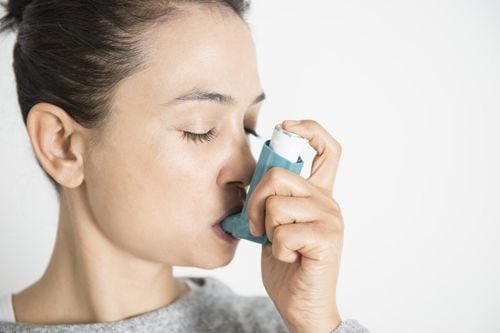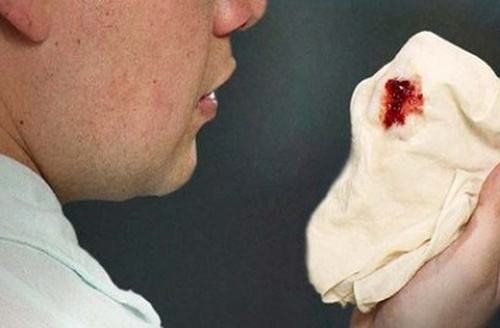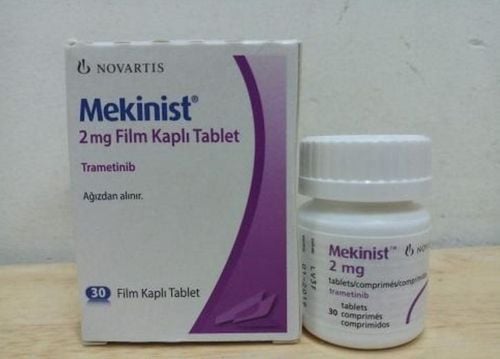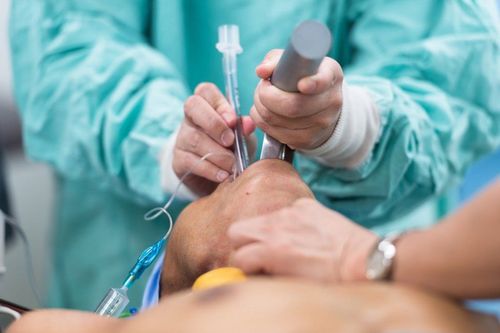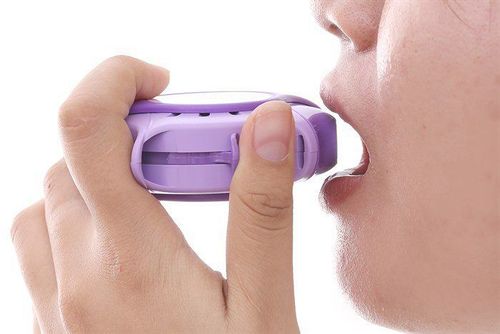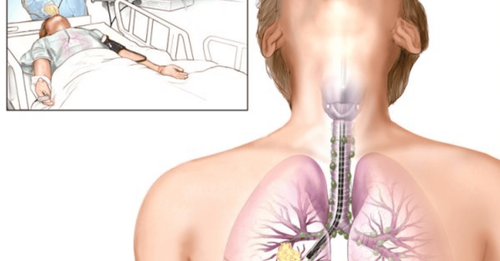This is an automatically translated article.
Bronchoscopy is a method of diagnosing respiratory diseases, helping doctors observe the respiratory tract from which to make accurate conclusions about disease conditions, especially lung diseases.
1. What are bronchi, where are they located?
The bronchus is an air duct in the lower respiratory system, located in series below the trachea, at the level of the 4th and 5th thoracic vertebrae. Then this air duct divides into small branches that go deep into the lungs to create into bronchial tree.
The bronchi begin at the division of the trachea to the hilum of the lungs. Divided into right main bronchus, left main bronchus. The bronchi are responsible for carrying air into the lungs. The right main bronchus and the left main bronchus form an angle of 70 degrees. The right main bronchus is larger, shorter, and steeper than the left main bronchus, so the remains are more likely to enter the right lung. The division of the bronchial tree is the basis for the division of the lobes of the lung.
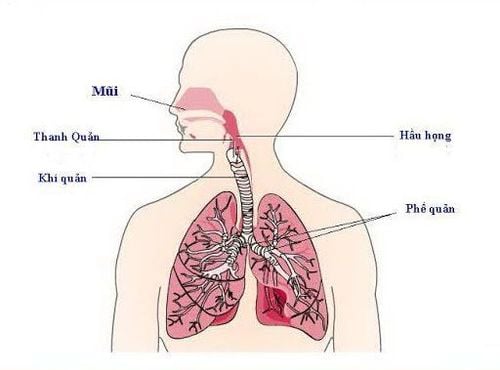
Vị trí phế quản trong hệ hô hấp
2. What is bronchoscopy?
While mediastinoscopy and thoracoscopy must be carried out in the operating room with complicated procedures, bronchoscopy can be carried out right at the common endoscopy room, helping doctors to observe the damage directly. injuries and nearby organs, just performed biopsies to take samples to ensure fast, effective and safe.
Currently, many countries around the world have applied bronchoscopy and transbronchial biopsies under the guidance of bronchoscopy to diagnose hilar nodes, mediastinum and parabronchial tumors. . This is considered a routine and first measure in diagnosing these lesions.
Thus, bronchoscopy is a method of deep examination of the bronchi by a flexible bronchoscope passed through the nose and larynx. By observing the images on the screen and performing some procedures during the endoscopy, the doctor can know the exact abnormalities occurring in the respiratory system, thereby making the appropriate diagnosis and treatment.
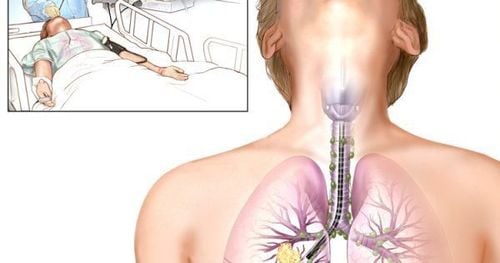
Nội soi phế quản giúp chẩn đoán bệnh lý hô hấp
3. Bronchoscopy for what?
The following are the important purposes of bronchoscopy.
Bronchoscopy will help your doctor diagnose lung conditions:
Tumors in the lungs, lymph nodes, atelectasis or changes seen on X-rays or on imaging studies other, Suspected pulmonary interstitial disease, Hemoptysis , Foreign body in airway, Cough persisting for more than three months with no known cause, Lung and bronchial infection Inhalation of toxic gases or chemicals, Removal of substances fluid or viscous sputum that is blocking the airway, Dilate the blocked or narrowed airway, Drain the abscess, Treat lung cancer using a number of different techniques, Airway irrigation (treatment by rinsing) . In addition, bronchoscopy also allows doctors to check the airways in the lungs or take a biopsy sample.
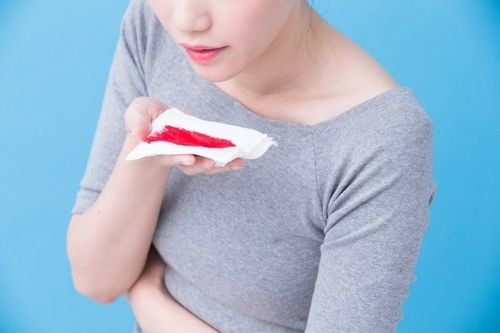
Người bệnh ho ra máu cần được chỉ định nội soi phế quản
4. Is bronchoscopy painful?
In general, this is a relatively safe method. Common problems after bronchoscopy are:
Feeling sore throat, coughing up little blood (if biopsy is present) but will go away on its own. There are cases of severe dyspnea due to pneumothorax or fever after endoscopy but very rarely. Due to the safe nature of this method, bronchoscopy can be performed even in outpatients without requiring hospitalization.
5. How should patients prepare for bronchoscopy?
Bronchoscopy will be performed at the Outpatient clinic and the patient will be discharged on the same day. There are also a few cases where the patient may have to stay overnight in the Inpatient ward.
The doctor will explain the procedure step by step and the patient will be asked to sign a consent form, Blood tests sometimes need to be done before the endoscopy, Patient needs to fast for at least 4 hours before During the procedure, however, it is possible to drink water 2 hours before, the Doctor may ask the patient not to take aspirin, ibuprofen or other blood thinners before the endoscopy, The patient will have a needle inserted into the vein. pulse so that medication can be given when needed. Patients should be accompanied by a family member or prepared to transport when discharged from the hospital because after the endoscopy, the patient may feel drowsy.
Many people want to rest the next day, so patients should arrange work, ask a babysitter or prepare necessary tasks in advance.
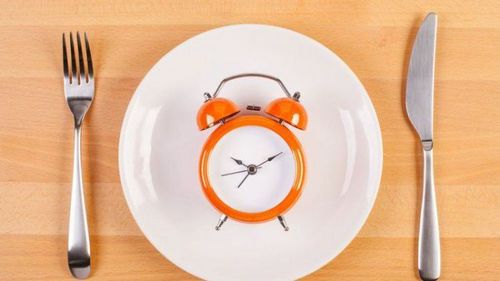
Thời gian nhịn ăn trước khi nội soi là 4 tiếng
6. How is bronchoscopy performed?
Endoscopy is more commonly performed than sedation endoscopy, in rare cases endoscopic anesthesia.
Endoscopy is performed in an endoscopy room with at least one doctor and one nurse.
Before endoscopy, the patient can be connected to the oxygen wire for breathing; Continuous monitoring of pulse, blood pressure and respiratory status through sensors attached to the fingertips. Right before the endoscopy, the patient will be sprayed with anesthetic deep into the nose and mouth to reduce discomfort when the bronchoscope is inserted. The patient will have a spicy, pungent, and bitter feeling for a few seconds. The patient was examined in the supine position. Notes to follow when the patient is bronchoscopy: Lie straight, relax, do not strain. Breathe evenly with the oxygen support line. Follow the instructions and requests of the doctor, the patient does not need to speak, or nod, shake his head to answer. The bronchoscope is threaded through the nose, throat, vocal cords and into the airways, to the lungs. Your doctor will occasionally spray more anesthetic to reduce discomfort. At first, the patient has a very uncomfortable choking sensation and a feeling of fear for the first 10-20 seconds. However, often the doctor will wait for the patient to get used to it until this feeling goes away. Patients should pay attention to breathing through their mouth and absolutely not talk during the procedure. Talking during endoscopy can cause hoarseness and sore throat after the endoscopy.
Usually the doctor will wash the lungs to get this wash for testing. In some cases, the doctor may need to perform a biopsy to take a few small tissue samples for testing. The biopsy is not painful for the patient, but may cause some bleeding. The entire procedure usually takes 10 to 15 minutes, or is faster if the patient cooperates well. The endoscopist will explain any existing lesions and the nursing staff will schedule a date for lab results and biopsies, if available. Usually the results will be communicated to the patient within 48 to 72 hours, however, in some cases it will take a few days for further testing. Early biopsy and test results should be obtained as this is important for an accurate diagnosis.
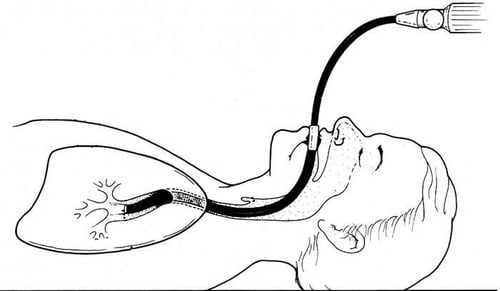
Ống nội soi được đưa qua đường miệng họng
7. What should patients pay attention to after bronchoscopy?
Patient can rest for a short time before discharge.
Absolutely do not eat or drink for 2 hours after the scan to avoid choking because the anesthetic is still effective. Patients may experience some problems after bronchoscopy: Feeling less sore in the throat and chest, your throat may be a little dry due to the medicine. The patient may cough up a little blood if a biopsy is performed. Older male patients may have difficulty urinating, but this condition does not last long, but it will quickly normalize. After bronchoscopy, the patient should not smoke because smoking will increase irritation in the respiratory tract. However, if the patient feels a lot of chest pain, has severe shortness of breath, or coughs up abnormally much blood, they should immediately notify the nurse for timely treatment.
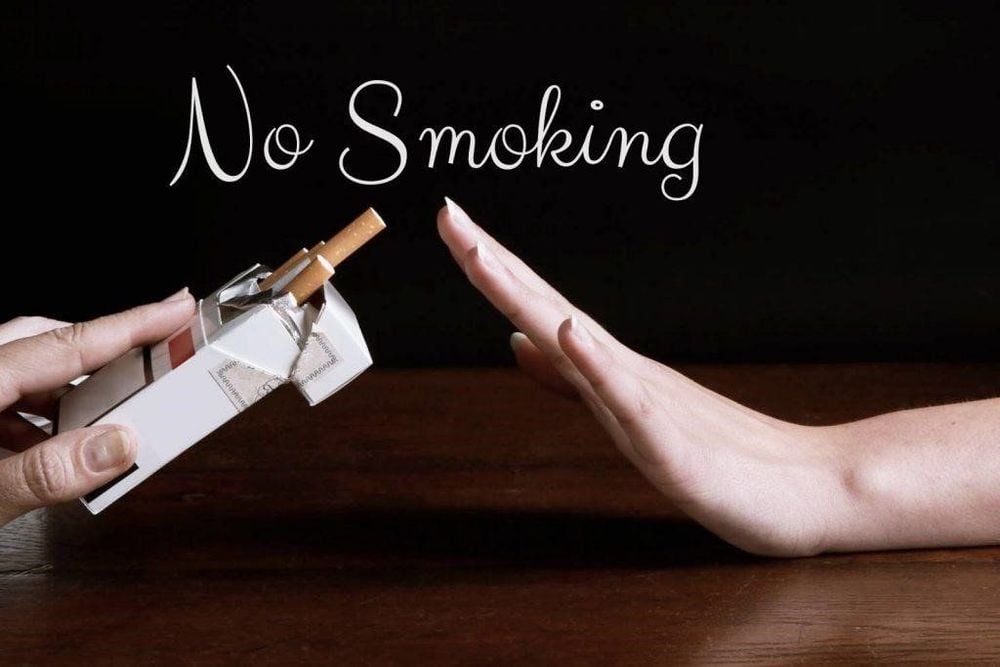
Sau nội soi tuyệt đối không được hút thuốc lá
For advice and registration for bronchoscopy with anesthesia at Vinmec International Hospital, you can contact HERE or contact Vinmec Health System nationwide.
MORE:
Bronchoscopy in children: Things to keep in mind The role of bronchoscopy in the diagnosis of respiratory diseases Process and possible risks during bronchoscopy




